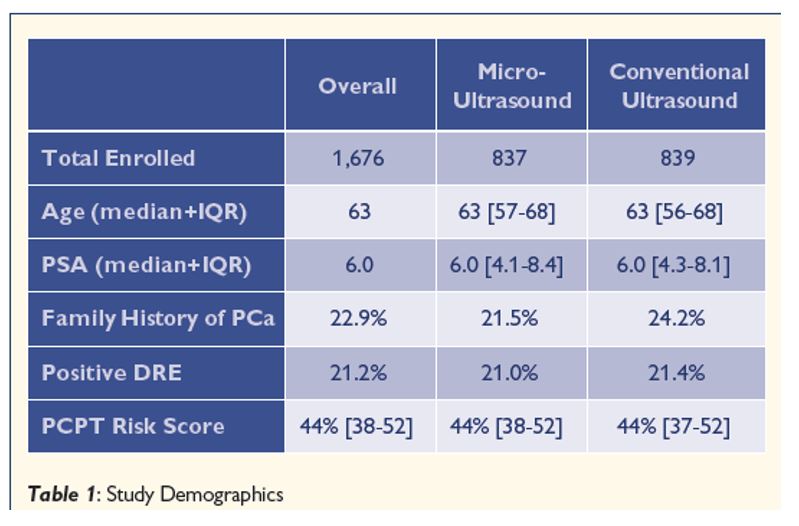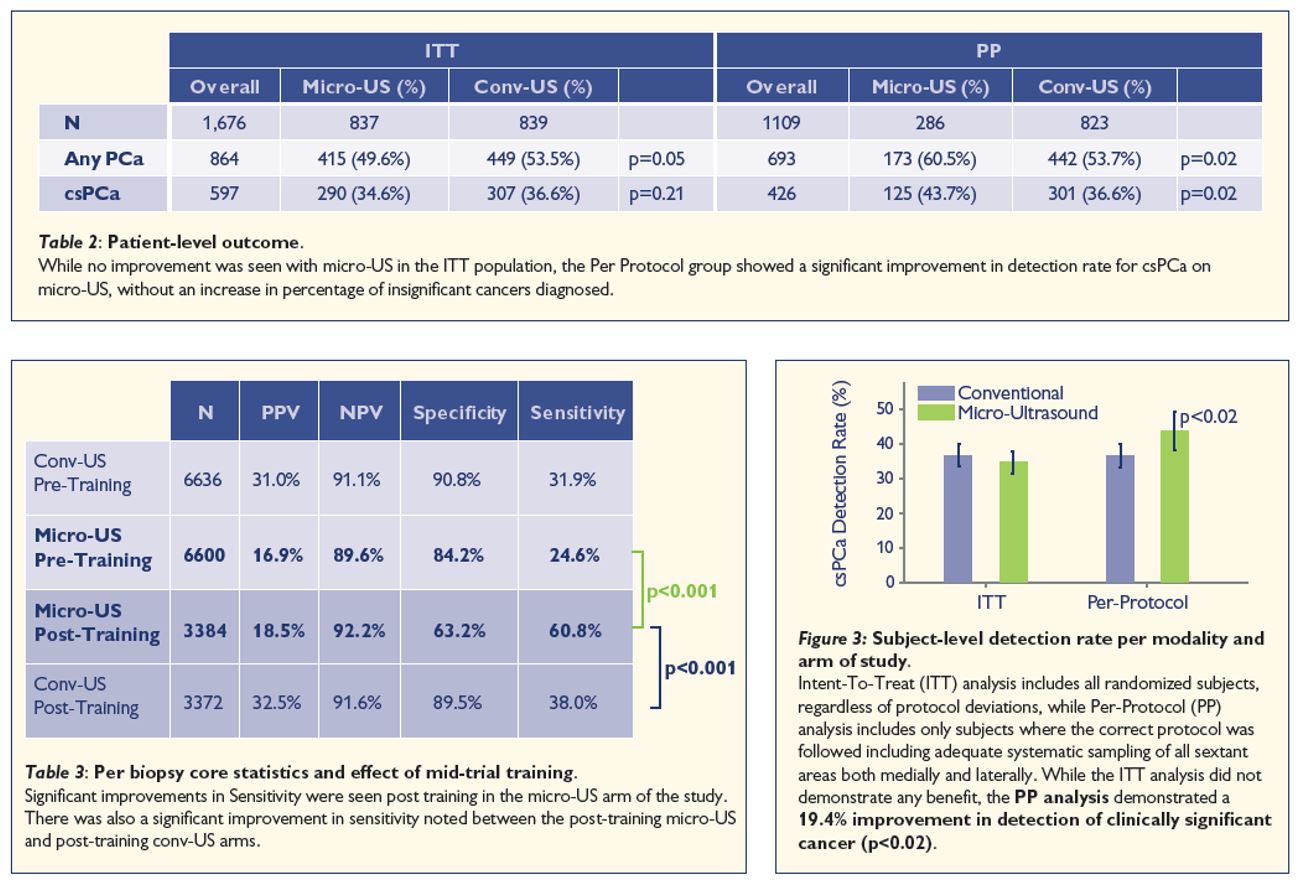A total of 1676 men referred for prostate biopsy with no history of prostate cancer were randomized either to micro-US or conv-US guided biopsy at 5 different sites, including Johns Hopkins, Urology of Virginia, Calgary, UHN/Princess Margaret Cancer Center, and Universite Laval. Each patient had 12 cores taken from his prostate, with each core taken either systematically or from a target near the systematic position.
Following the accrual of 1113 patients, the trial was paused to train the investigators on the new PRI-MUS (Prostate Risk Identification using Micro-Ultrasound) protocol for micro-ultrasound targeting, that was developed using pathology data from the first portion of the trial. Clinically significant prostate cancer was defined as any grade group >1 or any core with >50% cancer. Figure 1 shows the inclusion and exclusion criteria of the study. Figure 2 demonstrates the demographic data of the patients enrolled in the study.
Figure 1 – Inclusion and exclusion criteria:

Figure 2 – Demographic data:

The results demonstrated that no effect was noted in the intention to treat analysis (34.6% vs. 36.6%), due to errors in the sampling of the apical horn using the prototype transducer. However, in the per-protocol analysis, there was significantly greater clinically significant prostate cancer detected using the micro-US (43.7% vs. 36.6%, p=0.02) following PRI-MUS training. Additionally, after the PRI-MUS training, the sensitivity improved from 24.7% to 63.4% for micro-US (p<0.01), at a cost of lower specificity (63.2%). Figure 3 summarizes the results of the study.
In conclusion, this study showed that first generation micro-US with PRI-MUS protocol achieved greater sensitivity to detect significant prostate cancer than conventional TRUS. When physicians were instructed on using PRI-MUS and micro-US interpretation, further improvement in cancer detection rates were noticed with the same number of biopsy samples.
Figure 3 – Results:

Presented by: Christian Pavlovich, MD, Johns Hopkins University Brady Urological Institute, Dept. of Urology, Baltimore, Maryland
In conclusion, this study showed that first generation micro-US with PRI-MUS protocol achieved greater sensitivity to detect significant prostate cancer than conventional TRUS. When physicians were instructed on using PRI-MUS and micro-US interpretation, further improvement in cancer detection rates were noticed with the same number of biopsy samples.
Figure 3 – Results:

Presented by: Christian Pavlovich, MD, Johns Hopkins University Brady Urological Institute, Dept. of Urology, Baltimore, Maryland
Written By: Hanan Goldberg, MD, Urologic Oncology Fellow (SUO), University of Toronto, Princess Margaret Cancer Centre @GoldbergHanan at the 34th European Association of Urology (EAU 2019) #EAU19, conference in Barcelona, Spain from March 15-19, 2019.


